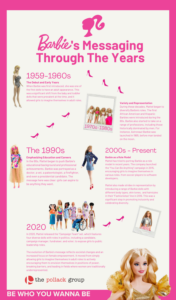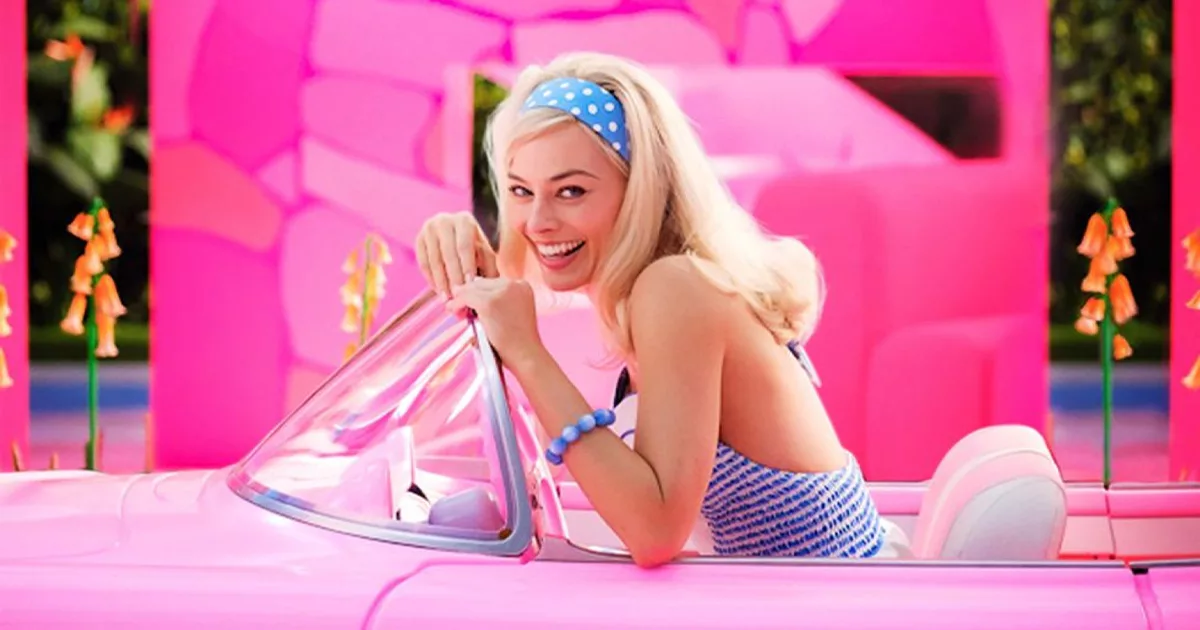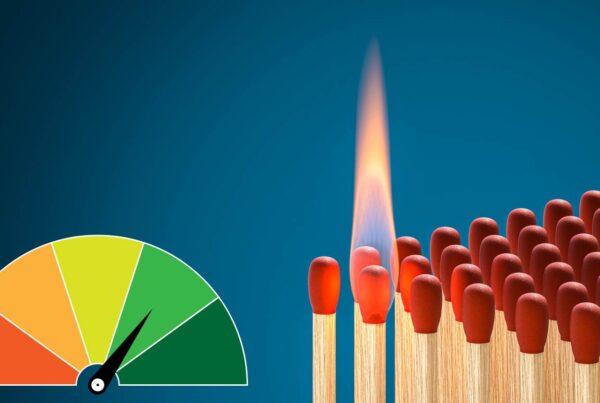(Image source: Warner Bros.)
By Kalli Vetrano
Unless you’ve been off the grid the past few weeks, you’ve likely seen a bit more pink in the world. Whether it’s a commercial from Progressive touting that they’re the selected insurance provider for the dreamiest pink house, or the Barbie’s classic pink Chevrolet Corvette seeing double the amount of online customer requests over the last month, it’s safe to say that Barbie’s marketing team is working harder than Kris Jenner these days.
According to Mattel, over 100 brands are participating in the marketing blitz leading up to the Barbie movie’s long-awaited July 21 release. So, what exactly is it about Barbie that makes her brand so attractive to so many?
Let’s take it back to the beginning. March 9, 1959, to be exact. Barbara Millicent Roberts, or “Barbie” as we know her, made her debut at the American International Toy Fair. Filling a gap in the toy market, Barbie was one of the first dolls to have an adult appearance. She also was one of the first toys to heavily rely on television advertising, a strategy that was so successful it has since been replicated by countless other toys. Barbie continues to be a hit, with 164 dolls being bought every minute according to Mattel.
Barbie was a key part of countless childhoods over the last few generations and the imagery and teasers of the new movie speak exactly to those nostalgic moments of sitting in your room, playing with Barbie and Ken, hanging out at Barbie’s Dreamhouse, or cruising the carpet in her classic pink convertible.
Unlike Barbie’s original unique marketing strategy, this time around the brand is using the tried-and-true tactic of hitting the nostalgia factor tapped into by other legacy brands. For example, a few years ago The Pollack Group employed a nostalgia-based creative campaign for iconic toymaker WHAM-O, the marketer of the “Slip ‘N Slide,” “Hula Hoop,” and “Frisbee.” These efforts brought new life to the brand and both its old and new offerings, with the agency securing coverage for the toys in top-tier publications including The Today Show, GMA and more.
But how is Mattel, and now Warner Bros. Studios, going beyond childhood appeal and luring in an adult audience for director Greta Gerwig’s $100 million budget Barbie movie?
Since her debut more than 60 years ago, Barbie has been an instantly recognizable icon, the “OG influencer.” She’s evolved from the Barbie who was scared to break a nail, to the Barbie who is fearless when it comes to breaking stereotypes and inspiring young women especially with her timeless motto: “You can be anything.”

In a time when female empowerment is oh so needed, actress Margot Robbie’s Barbie emerges to awaken the little girl in our jaded hearts as she and her sidekick (not savior) Ken, portrayed by Ryan Gosling, embrace the real world, and find answers when Barbie realizes things aren’t as perfectly pink as they seem. This film not only embraces the nostalgia of the legendary doll but also provides a much-needed update to continue to bring make Barbie relatable to both Millennial and Gen Z audiences and inspire them to reach their full potential.
And much like Barbie’s world, Mattel is doing everything in its power to turn our real-world pink and flex her star power and influence. It seems every company and their parent brand are hopping on the Barbie bandwagon, or in this case Dreamcamper. As the Barbiecore aesthetic evolves, it continues to instill confidence in investors by showing a consistently impressive sales performance through numerous launches and limited-edition partnerships through the years. The brand is a very attractive one to collaborate with.
The campaigns supporting the movie have continued this winning streak. The real success for the 2023 Barbie film is that the brand is brought to life beyond both the silver screen and social media. Partnerships from Cold Stone Creamery, to Xbox, to AirBnB, encapsulate the nostalgia, cheerfulness, and core message of Barbie to create an emotional connection and inspire consumers to be fantastic, both in their online and real, non-plastic-wrapped lives.






